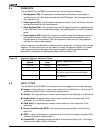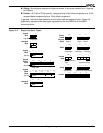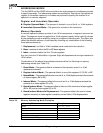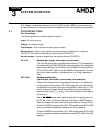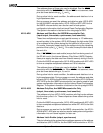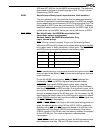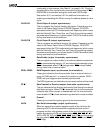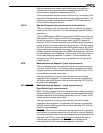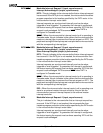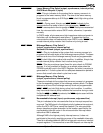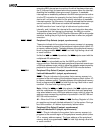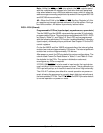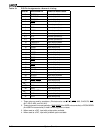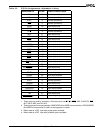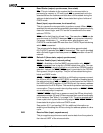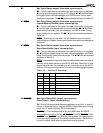
System Overview
3-6
INT2/INTA0 Maskable Interrupt Request 2 (input, asynchronous)
Interrupt Acknowledge 0 (output, synchronous)
INT2—This pin indicates to the microcontroller that an interrupt request
has occurred. If the INT2 pin is not masked, the microcontroller transfers
program execution to the location specified by the INT2 vector in the
microcontroller interrupt vector table.
Interrupt requests are synchronized internally and can be edge-
triggered or level-triggered. To guarantee the interrupt is recognized,
the device issuing the request must continue asserting INT2 until the
request is acknowledged. INT2 becomes INTA
0 when INT0 is
configured in Cascade mode.
INTA
0—When the microcontroller interrupt control unit is operating in
Cascade mode, this pin indicates to the system that the microcontroller
needs an interrupt type to process the interrupt request on INT0. The
peripheral issuing the interrupt request must provide the microcontroller
with the corresponding interrupt type.
INT3/INTA
1/IRQ Maskable Interrupt Request 3 (input, asynchronous)
Interrupt Acknowledge 1 (output, synchronous)
Slave Interrupt Request (output, synchronous)
INT3—This pin indicates to the microcontroller that an interrupt request
has occurred. If the INT3 pin is not masked, the microcontroller then
transfers program execution to the location specified by the INT3 vector
in the microcontroller interrupt vector table.
Interrupt requests are synchronized internally and can be edge-
triggered or level-triggered. To guarantee the interrupt is recognized,
the device issuing the request must continue asserting INT3 until the
request is acknowledged. INT3 becomes INTA
1 when INT1 is
configured in Cascade mode.
INTA
1—When the microcontroller interrupt control unit is operating in
Cascade mode, this pin indicates to the system that the microcontroller
needs an interrupt type to process the interrupt request on INT1. The
peripheral issuing the interrupt request must provide the microcontroller
with the corresponding interrupt type.
IRQ—When the microcontroller interrupt control unit is operating as a
slave to an external master interrupt controller, this pin lets the
microcontroller issue an interrupt request to the external master
interrupt controller.
INT4 Maskable Interrupt Request 4 (input, asynchronous)
This pin indicates to the microcontroller that an interrupt request has
occurred. If the INT4 pin is not masked, the microcontroller then
transfers program execution to the location specified by the INT4 vector
in the microcontroller interrupt vector table.
Interrupt requests are synchronized internally and can be edge-
triggered or level-triggered. To guarantee the interrupt is recognized,
the device issuing the request must continue asserting INT4 until the
request is acknowledged.



